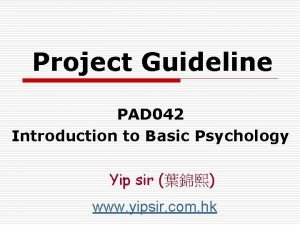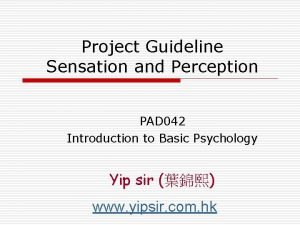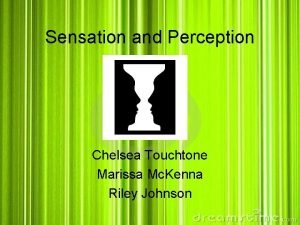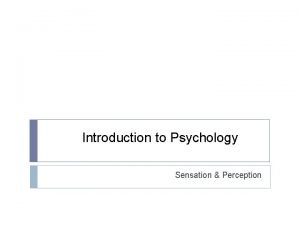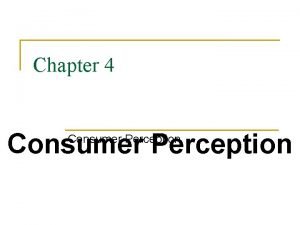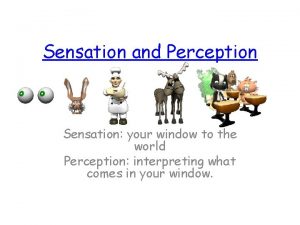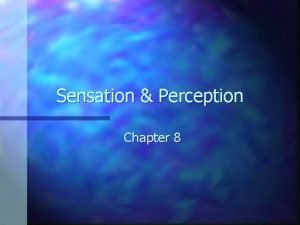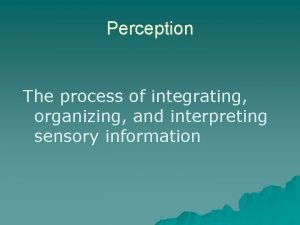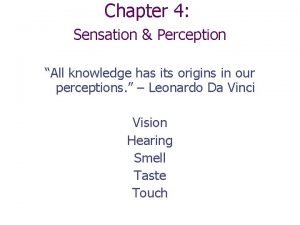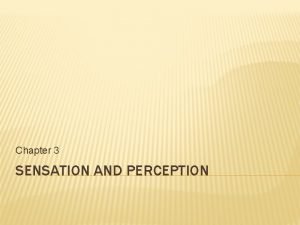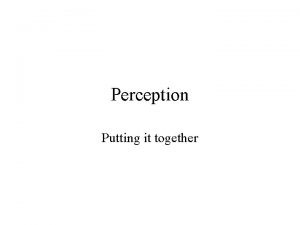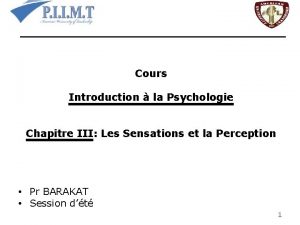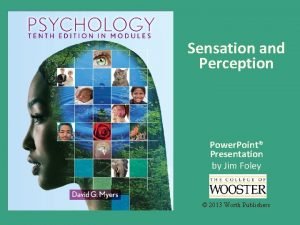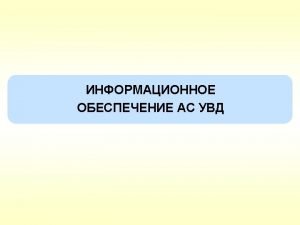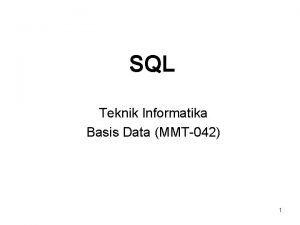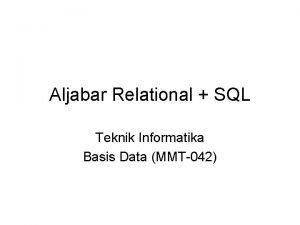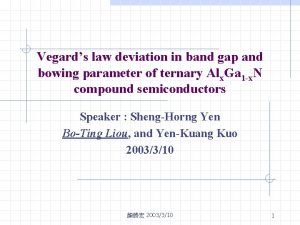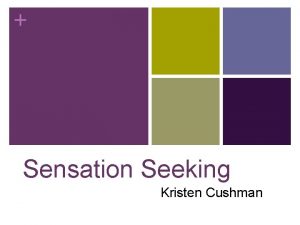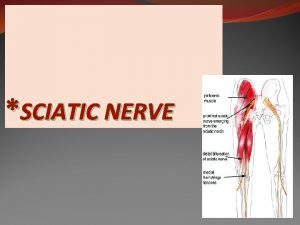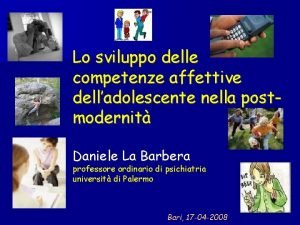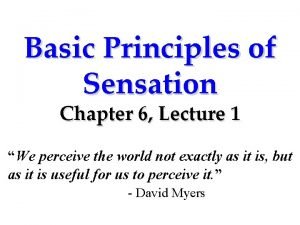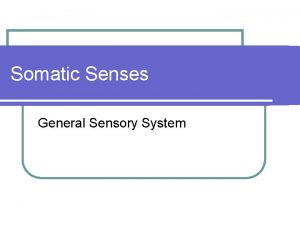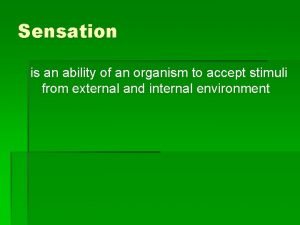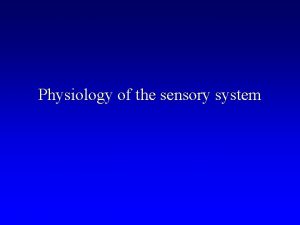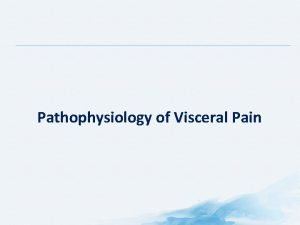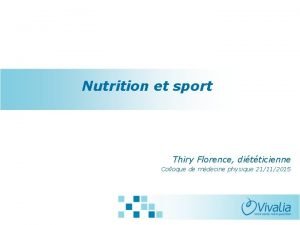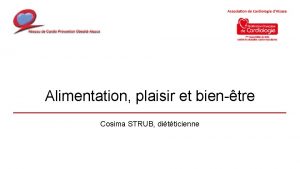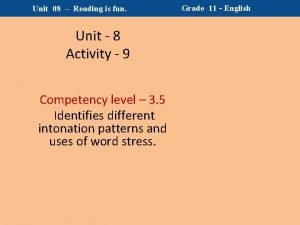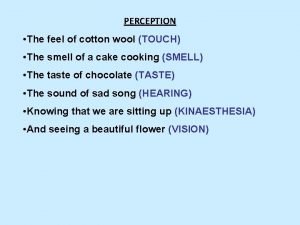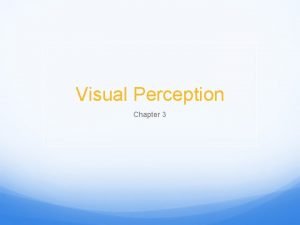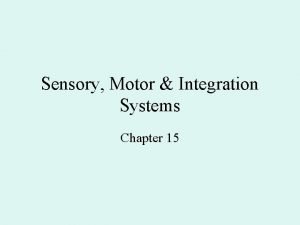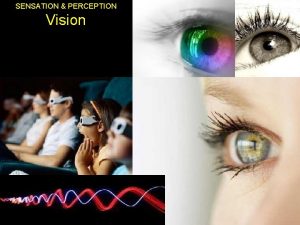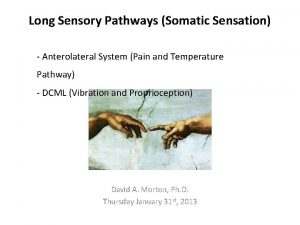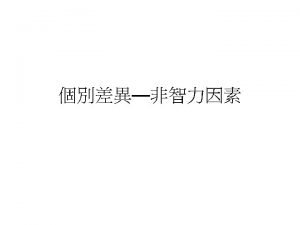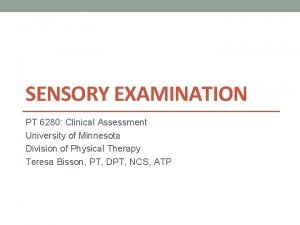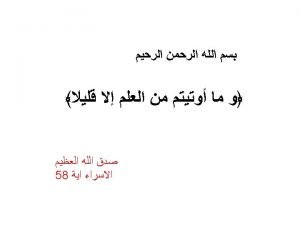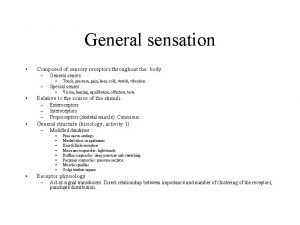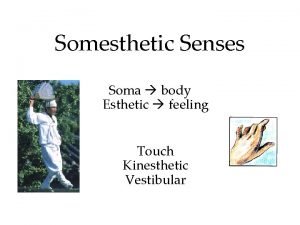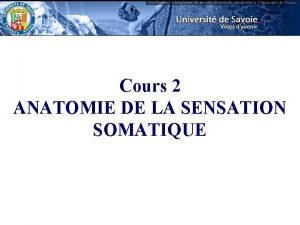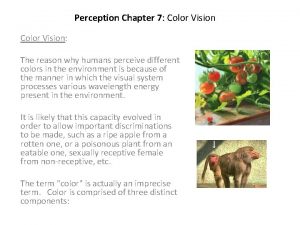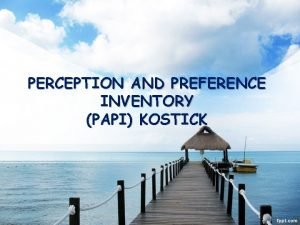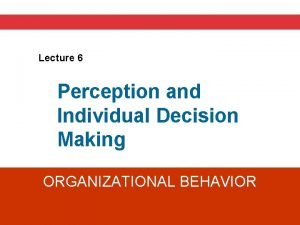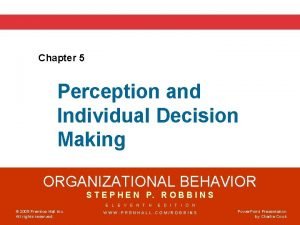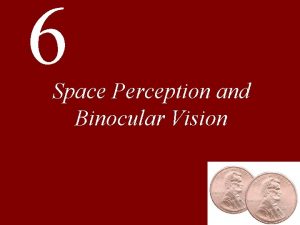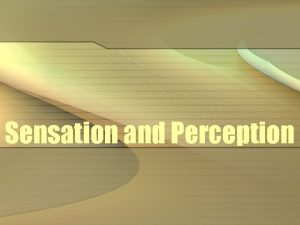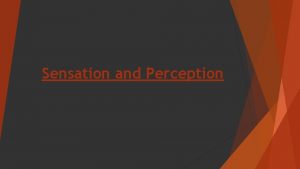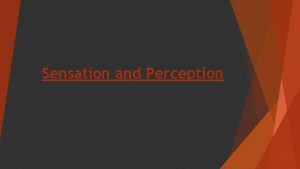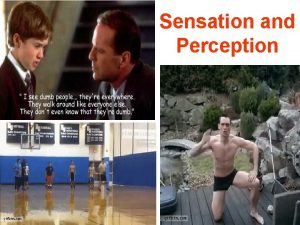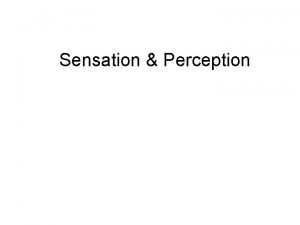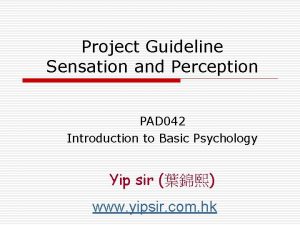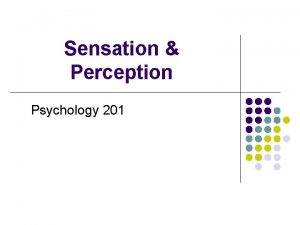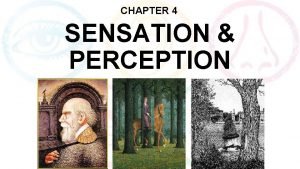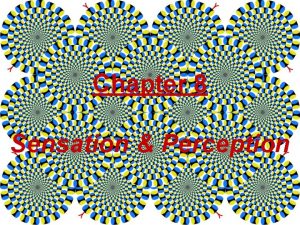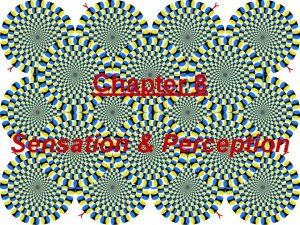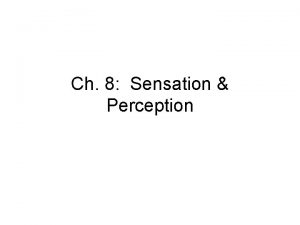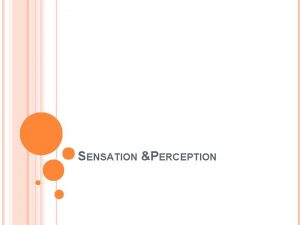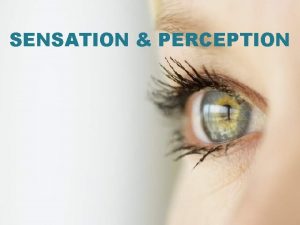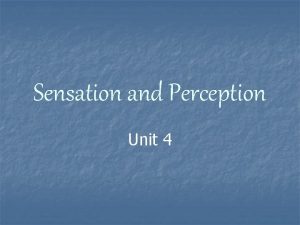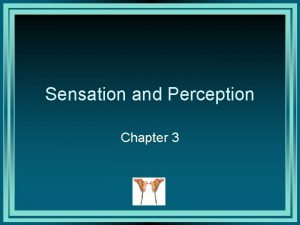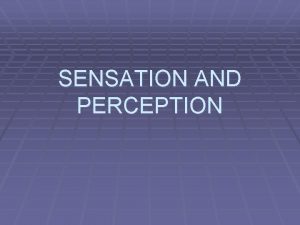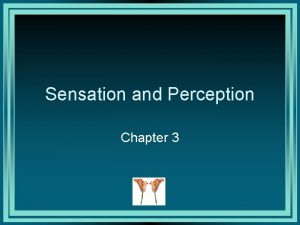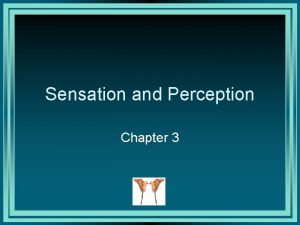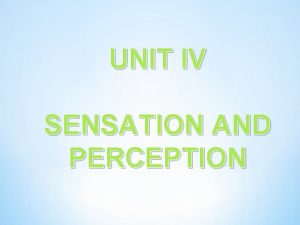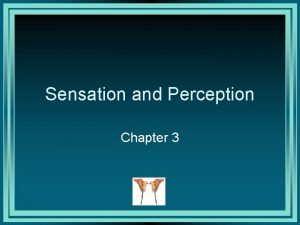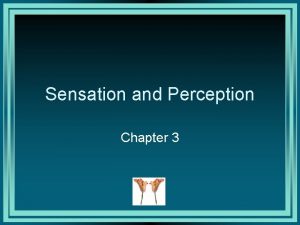Tutorial 4 Sensation and Perception PAD 042 Introduction




























































- Slides: 60

Tutorial 4 Sensation and Perception PAD 042 Introduction to Basic Psychology Yip sir (葉錦熙) www. yipsir. com. hk 1

Today’s Rundown 1. Data vs Information 2. Sensation vs Perception 3. Perceptual Organization n Form Perception: figure and ground n Gestalt Laws of Organization n 4. proximity, similarity, closure, continuity n Perceptual Constancy n Depth Perception: Translating 2 -D to 3 -D n Binocular Disparity n monocular cues Top-Down and Bottom-Up Processing 2

Sensation & perception vs data and information n Data consists of all sorts of unorganized and incomprehensible facts in the form of numbers, characters, symbols or graphics n Information is processed data which is meaningful and useful 3

Sensation 知覺 / 感覺 The process of ____, and transmitting messages from the outside world to the brain. Perception 看法 / 察覺 The process of organizing and _____ information received from the outside world. 4

Major Type of Sensation Ø Sight Ø Hearing Ø Taste Ø Smell Ø Touch How can it apply to enhance learning effectiveness? 55

n I hear, I forget (hearing) n I see, I remember (sight) n I do (teach), then I integrate (touch) 「聽不如睇」 「睇不如做」 五感總動員 6

Mantis 螳螂 7

Trophy 戰利品 8

Perceptual Organization (Gestalt Laws of Organization) n Figure - ground n Continuity n Proximity n Similarity n Closure n Simplicity 9

Figure The word above is clearly perceived as figure with the surrounding white space ground. 10

Ground The word above is also perceived as figure with the surrounding black space ground. 11

12

13

Figure-ground 14

Figure-ground 15

“My wife and mother-in-law” http: //psylux. psych. tudresden. de/i 1/kaw/diverses%20 Material/www. illusionworks. com/ht ml/perceptual_ambiguity. html 16

This image uses complex figure/ground relationships which change upon perceiving leaves, water and tree trunk. 17

Grouping Having discriminated figure from ground our perception needs to organize figure into meaningful form using grouping rules. 18

Proximity Similarity Continuity Connected ness 19

The nine squares above are placed without proximity. They are perceived as separate shapes. 20

When the squares are given close proximity, unity occurs. While they continue to be separate shapes, they are now perceived as one group. 21

The fifteen figures above form a unified whole (the shape of a tree) because of their proximity. 22

The above example shows a grid of elements where no divisional structure is evident. All of the elements seem to be equally related. 23

This example above clearly shows that the structure is columnar. Since the shapes are consistent, color is the communicative feature here. 24

In this example above, it is clear that the elements are arranged into horizontal rows. 25

The example above shows that the elements are split into two categories, where all of the gray squares are related and all of the brown squares are related. 26

When similarity occurs, an object can be emphasized if it is dissimilar to the others. The figure on the far right becomes a focal point because it is dissimilar to the other shapes. 27

Closure occurs when an object is incomplete or a space is not completely enclosed. If enough of the shape is indicated, people perceive the whole by filling in the missing information. Although the panda above is not complete, enough is present for the eye to complete the shape. When the viewer's perception completes a shape, closure occurs. 28

Continuation occurs when the eye is compelled to move through one object and continue to another object. Continuation occurs in the example above, because the viewer's eye will naturally follow a line or curve. The smooth flowing crossbar of the "H" leads the eye directly to the maple leaf. 29

Revision What are the following forms of perception? 30

Grouping based on: _______ 31

Grouping based on: ____ 32

Grouping based on: _______ 33

Grouping based on: _______ 34

Perceptual Constancy Perceiving objects as unchanging even as illumination and retinal image change. Perceptual constancies include constancies of shape and size. Shape Constancy 35

Perceptual constancy n The same object can project many different images on to the retina e. g. as distance varies, or lighting n A variety of mechanisms compensate for this variation in image characteristics, so that the perceptual effect is (what is assumed to be) closer to the true characteristics of the object 36

Size Constancy Stable size perception amid changing size of the stimuli. Size Constancy 37

Size-Distance Relationship The distant monster and the top red bar appear bigger because of distance cues. Alan Choisnet/ The Image Bank From Shepard, 1990 38

The Ponzo illusion may help you understand the moon illusion. Picture the two white bars as resting on the railroad tracks. In the drawing, the upper bar is the same length as the lower bar. However, because the upper bar appears to be farther away than the lower bar, we perceive it as longer. The same logic applies to the moon illusion. 39

Moon illusion The horizon moon appears to be larger than the elevated moon. 40

The Ames room. From the front, the room looks normal; actually, the right -hand corner is very short, and the left-hand corner is very tall. In addition, the left side of the room slants away from viewers. The diagram shows the shape of the room and reveals why people appear to get bigger as they cross the room toward the nearer, shorter right corner. 41

Why does line (b) in the Müller-Lyer illusion look longer than line (a)? Probably because it looks more like a distant corner than a nearer one. Because the vertical lines form images of the same length, the more “distant” line must be perceived as larger. As you can see in the drawing on the right, additional depth cues accentuate the Müller-Lyer illusion. (After Enns & Coren, 1995. ) 42

Color Constancy Perceiving familiar objects as having consistent color, even if changing illumination filters the light reflected by the object. Color Constancy 43

Perceptual Illusion 44

45

Depth Perception n The ability to view the world in three dimensions and to perceive distance. n distance between the eyes slightly different image reaches each retina brain translates the difference in images to person-object distance! 46

Depth Perception n Definition: Ability to see three-dimensional space and to accurately judge distances n Depth Cues: Features that supply information about distance and space n Binocular Depth Cue: Depth cue that can be sensed with two eyes n Monocular Depth Cue: Depth cue that can be sensed with one eye 47

Binocular Cues Retinal disparity: Images from the two eyes differ. 1. Hold fingers ½ inch apart—about five inches from eye. 2. Now look past your fingers. WEIRD!!!! 48

Binocular Cues Convergence: Neuromuscular cues. When two eyes move inward (towards the nose) to see near objects, and outward (away from the nose) to see far away objects. 49

Monocular Cues Relative Size 近大遠小: If two objects are similar in size, we perceive one that casts a smaller retinal image as farther away. 50

Monocular Cues Interposition 互叠: Objects that occlude (block) other objects tend to be perceived as closer. Rene Magritte, The Blank Signature, oil on canvas, National Gallery of Art, Washington. Collection of Mr. and Mrs. Paul Mellon. Photo by Richard Carafelli. 51

Monocular Cues Relative Clarity: Because light from distant objects passes through more air, we perceive hazy objects as farther away than sharp clear objects. 52

Monocular Cues Texture Gradient 質感坡度: Indistinct (fine) texture signals increasing distance. © Eric Lessing/ Art Resource, NY 53

Monocular Cues Relative motion: Objects closer to a fixation point move faster and in opposing direction to objects farther away from a fixation point, which move slower and in the same direction. 54

Monocular Cues Linear Perspective 直線透視: Parallel lines like rail road tracks, appear to converge with distance. The more the lines converge, the greater their perceived distance. © The New Yorker Collection, 2002, Jack Ziegler from cartoonbank. com. All rights reserved. 55

Motion Perception: Objects that tend to travel towards us grow in size and ones that move away shrink in size. The same is true when the observer moves to or from an object. 56

Apparent Motion Phi Phenomenon: When lights flash at certain speed they tend to present illusions of motion. Neon signs use this principle to create motion perception. Two lights after the Illusion other. of motion. One light jumping from flashing one pointone to another: 57

Top-Down vs. Bottom-up Processing n Top-down ¨ n Conceptually-driven, perception based on information (concepts) coming from previous experience, stored in memory Bottom-up ¨ “data-driven”, perception guided by information (data) currently coming in through the senses All perception is based on some combination of these two factors n Perceptual Priming n 58

Top-down process n The use of preexisting thoughts, motivations, and expectations to apply meaning onto a sensory event. n Examples: ¨ getting a wrong bus ¨ fried beef noodles and hot lemon coke ¨ meeting a new classmate in the tutorial group 59

Bottom-up process n Detecting specific elements in visual input and assembling them into a more complex form. n Examples: ¨ doing jigsaw puzzles ¨ assessing a social work placement student’s performance (green trainer) 60
 Pad-042
Pad-042 Pad-042
Pad-042 Chapter 5 sensation and perception
Chapter 5 sensation and perception Gestalt reversible figures
Gestalt reversible figures Ap psych sensation and perception
Ap psych sensation and perception Example of perception
Example of perception Sensation and perception crossword review answers
Sensation and perception crossword review answers Chapter 3 sensation and perception
Chapter 3 sensation and perception Sensation and perception
Sensation and perception Chapter 6 sensation and perception
Chapter 6 sensation and perception Psychology chapter 4 sensation and perception
Psychology chapter 4 sensation and perception Pecetion
Pecetion Sensation and perception
Sensation and perception Opponent process theory
Opponent process theory Kinesthetic sense
Kinesthetic sense Chapter 8 sensation and perception
Chapter 8 sensation and perception Sensation and perception uu
Sensation and perception uu Chapter 4 sensation and perception
Chapter 4 sensation and perception Chapter 3 sensation and perception
Chapter 3 sensation and perception Perceptual system
Perceptual system Sensation et perception en psychologie
Sensation et perception en psychologie Perception vs sensation
Perception vs sensation Old woman young woman illusion
Old woman young woman illusion Area code system
Area code system 042-68-4425
042-68-4425 Mmt-042
Mmt-042 Mmt-042
Mmt-042 Nrg-gy018
Nrg-gy018 Dori-042
Dori-042 Vegards law
Vegards law Sensation seeking
Sensation seeking Ischiadic nerve
Ischiadic nerve Sensation seeking significato
Sensation seeking significato 6 principles of sensation
6 principles of sensation Types of sensation
Types of sensation Types of sensation
Types of sensation Cortical sensation
Cortical sensation Back pain classification
Back pain classification Ditticienne base sur coute sensation
Ditticienne base sur coute sensation Ditticienne base sur coute sensation
Ditticienne base sur coute sensation What causes the burning sensation in your muscles
What causes the burning sensation in your muscles Vocabulary activity 8-1 sensation answer key
Vocabulary activity 8-1 sensation answer key Cotton wool sensation
Cotton wool sensation Sensation
Sensation Sensation
Sensation Sensation
Sensation Dcml sensation
Dcml sensation Thinking sensing feeling intuition
Thinking sensing feeling intuition Cortical sensations
Cortical sensations Difference between fine touch and crude touch
Difference between fine touch and crude touch Somatic pain pathway
Somatic pain pathway Ear sensory
Ear sensory What is somesthetic senses
What is somesthetic senses Sensation somatique
Sensation somatique Chapter 7 vision and perception
Chapter 7 vision and perception Lembar jawaban papi kostick
Lembar jawaban papi kostick Perception and individual decision making
Perception and individual decision making Subjective perception of vitality and feeling well
Subjective perception of vitality and feeling well Perception and individual decision making
Perception and individual decision making Subjective perception of vitality and feeling well
Subjective perception of vitality and feeling well Crossed disparity
Crossed disparity
